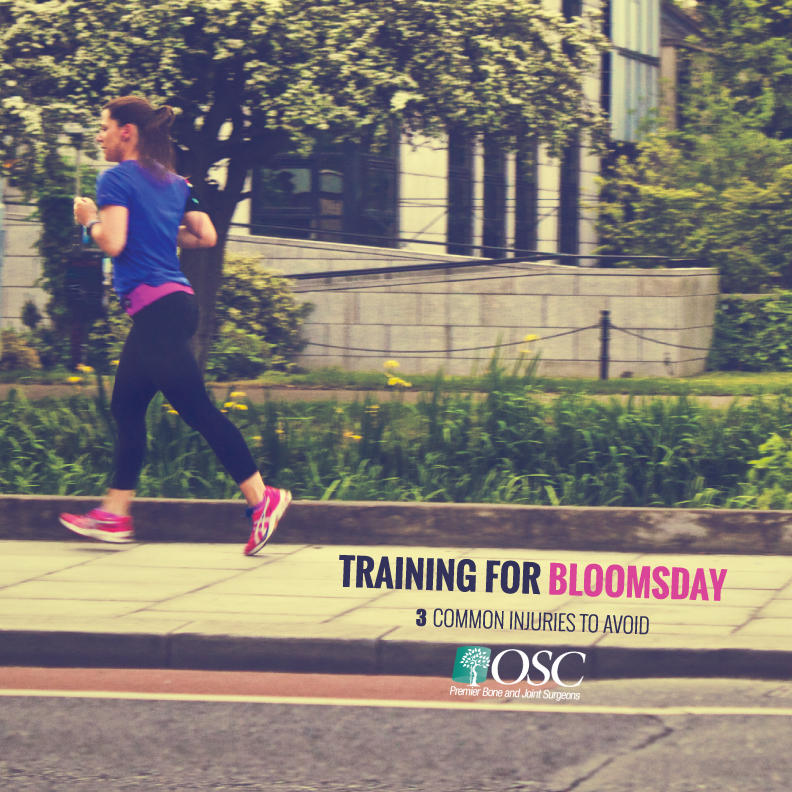Among road races it’s legendary, attracting about 50,000 people from all over the world to participate in the world’s largest 10k. Bloomsday is Spokane’s crowning jewel of sporting events and it’s hard to imagine springtime in Spokane without it. With registration open, now is the perfect time to start your training programs and get ready for Race Day on May 3rd. Before you get started though, here are a few of the most common running injuries and how how to avoid them during your training this year. Although the list can be long when talking about potential injuries from such an active sport like running, here are the top 3.
Runner’s Knee
About 40% of all running injuries are knee-related. That’s probably why runners have an injury named after them. ‘Runner’s Knee’ is actually Patellofemoral Pain Syndrome (PFPS). The added stress of running can cause irritation and inflammation where the kneecap rests on the thighbone. The pain can be sudden and sharp and then disappear and return unexpectedly.
Symptoms
- Tenderness around or behind the patella (kneecap), usually towards the center
- Sharp and sudden or dull and chronic pain in the kneecap while running or resting
- Pain aggravated by downhill running
Prevention
- Run on softer surfaces
- Increase mileage no more than 10% per week
- Gradually increase hill running
- Undergo gait analysis to see if you are wearing proper shoes (see OSC article on gait analysis)
- Listen to the pain! Stop immediately if your body is telling you something is wrong. (Taking the time to heal takes less time that recovering from an overuse-injury)
- Build up the quadriceps and stretch tight hamstring muscles.
Shin Splints
Also known as medial tibial stress syndrome (MTSS), to put it simply, shin splints is the pain that develops along the shinbone. It is a common injury among new athletes, especially runners, when the muscles, tendons and bone tissue become overworked by a new fitness routine.
Symptoms
- Tenderness on the lower leg, along the shinbone
- Possible swelling
Prevention
- Increase mileage no more than 10% each week
- Have the right footwear
- Add calf raises into your workout routine to build up muscle in the lower leg
Iliotibial Band Syndrome
Also known as ITBS, this injury is especially common to runners who are training for their first half-marathon (Bloomsday is a few miles shy of that distance).
As mileage increases, inflammation can occur in the Iliotibial band, a ligament that stretches from the thigh to the shin. This is the most common overuse injury for seasoned runners who are adding on extra miles.
Symptoms
- Bend knee at a 45-degree angle, if there is an IT band problem, there will be pain on the outside of the knee
- Movement of the knee becomes painful
Prevention
- Remember the 10% rule, adding no more that 10% of your previous mileage at a time
- Walk for half of a mile before running
- Make sure shoes aren’t worn out on the outsides of the sole
- Avoid running on concrete
- If you’re running on a track, change directions often
- Schedule an appointment for gait analysis at OSC
No matter what your racing goals are this year at Bloomsday, remember to add mileage slowing and listen to your body. Pain is always the first warning sign that something is wrong. If you’re past the stage of prevention, schedule an appointment at OSC and we’ll help you get up and running again as soon as possible, maybe even in time for the big race!

